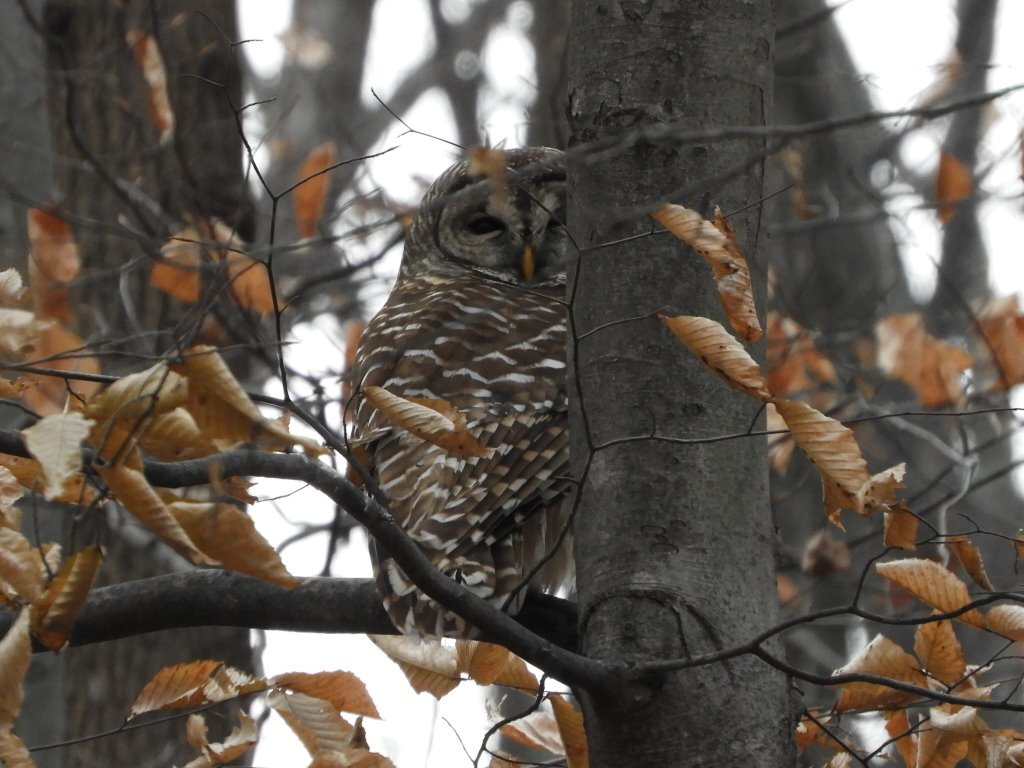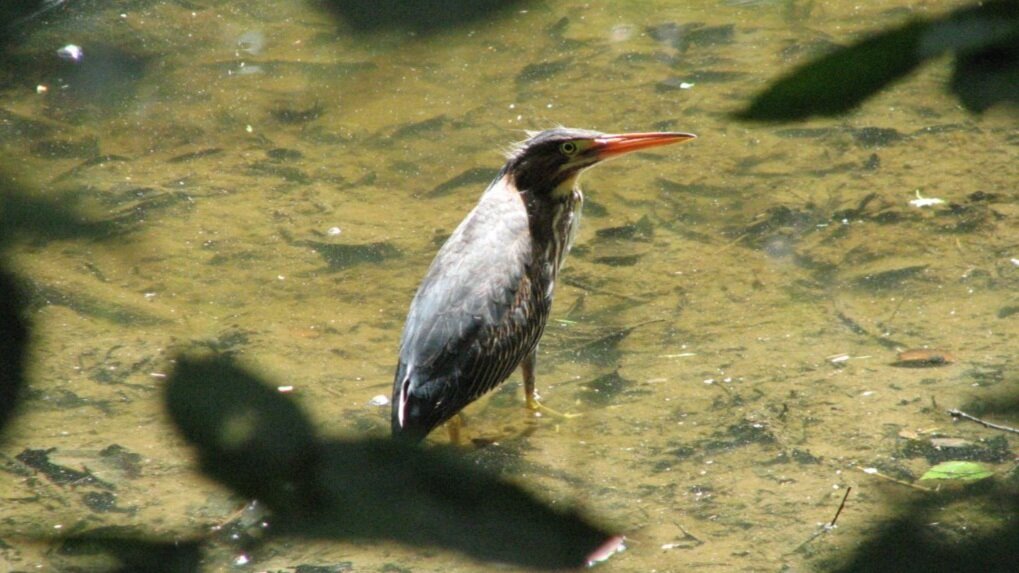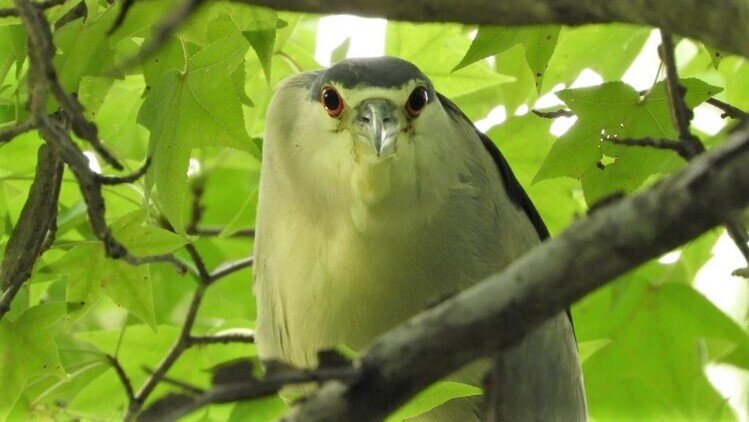This is a 48-acre rectangular forested park with a 1-mile long trail running through it. The trail is wide and relatively flat, parallels Daniels Run on its north side, and has upland tulip, beech, and oak woodland on its south side. The trail begins at the end of Tedrich Boulevard and ends at the Army-Navy golf course where a bridge crosses Daniels Run. A small foot trail goes uphill beside and behind the golf course, giving a view of a pond that is part of an industrial petroleum tank farm. This pond is the source of many of the ducks and geese reported for Daniels Run Park. When starting at Tedrich, the main trail is uphill at the start, but a lower foot trail nearer Daniels Run is mostly level and soon connects to the main trail. There are 5 bridges over Daniels Run leading from neighborhoods to the north. These short spurs give views of the creek and the riparian area around it. The first is at Tedrich and the last is at the golf course end of the park. The others are obvious and marked by trail signs.
The bird population in the park is typical for an upland forested area. In summer the most common nesting species (other than permanent residents) include Acadian Flycatchers and Red-eyed Vireos followed, in lesser abundance, by Eastern Wood Pewees, Blue-gray Gnatcatchers, and Wood Thrushes. Louisiana Waterthrushes, Ovenbirds, Northern Parulas, and Common Yellowthroats have been detected singing in June and so are probable, but unconfirmed, nesters. Among permanent residents, most woodland species nest here, including 5 species of woodpeckers, Barred Owl, and typically 2 pairs of Red-shouldered Hawks. During migration, the park can be good for warblers; eBird lists 26 species of warblers sighted here, with the more unusual ones for this park being Worm-eating, Kentucky, Hooded, and Wilson’s. In winter the permanent residents are joined by Yellow-bellied Sapsuckers, both kinglets, Hermit Thrushes, and Winter Wrens with White-throated Sparrows and juncos on the edges.
Both ends of the Daniels Run Park trail connect to walking trails that continue outside of the park for various distances. At the Tedrich end, a walking trail continues for about 1.5 miles until reaching Main Street in the center of town. This trail follows Daniels Run through a variety of habitats, including backyards, school grounds, wood lots, and an overgrown, tangled area as you approach the final bridge to a shopping center and Main Street. At the golf course end of the park, a trail of 0.2 miles continues along the creek passing a “backyard habitat” house and an area of riffles in the stream, both of which attract birds.
Accessibility: Parking is available on the streets that dead end at the park boundary. From Main Street (Rt. 236), use Tedrich Boulevard or Estel Road. From Old Lee Highway, use Embassy Lane, Parklane Road, or Queen Anne Drive. Tedrich is the most commonly used, followed by Estel. The trails are open dawn to dusk.
Owner/Manager: The City of Fairfax
ebird Hotspot: Daniels Run Park
—Paul and Joan Woodward
Return To Fairfax City Profile



